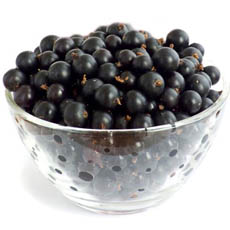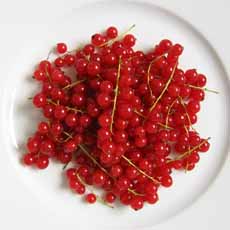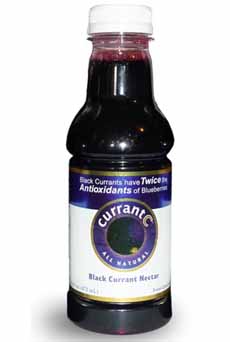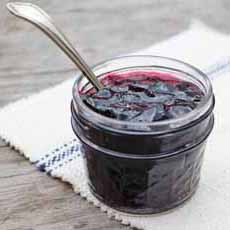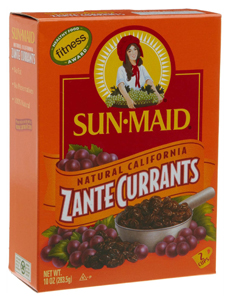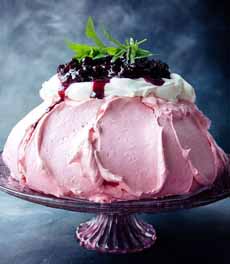Black Currant Juice Uses & Why You Should Drink It
|
Black currants have twice the antioxidants of blueberries, hitherto the uber-antioxidant fruit. The small, purple-black berries that grow in clusters on the Ribes nigrum bush have four times the vitamin C of oranges and significant amounts of calcium, magnesium, manganese, potassium, and riboflavin.
Should you be drinking currant juice? Of course, especially when it tastes so good, whether straight, in spritzers, or as a mixer. You can also add a splash to herbal tea. The flavor is a bit grape-like (some call the taste a blueberry-cranberry blend), but currant juice is distinctive, bold, pleasantly tart, and sophisticated. It’s the kind of juice wine drinkers would choose if they couldn’t drink wine anymore Why aren’t we all drinking currant juice? Growing black currants was banned for 100 years in the U.S. (more about that below), but now there is juice aplenty. Currant C and Knudsen’s both sell black currant juice. Currant C’s all-natural product, sold in 16-ounce bottles, is not pasteurized and needs to be refrigerated. The juice is made from concentrate with filtered water, and a bit of pure cane sugar is added to offset the tartness. Each 16-ounce bottle of Currant C contains two servings, at 130 calories each. If you prefer a noncaloric sweetener or otherwise don’t want added sweetness, you can buy the concentrate. Knudsen’s 32-ounce bottle is unsweetened and shelf-stable. Currant C, a pioneer grower in New York State, sells individual bottles of black currant juice and the concentrate to make your own; plus dried currants, currant vinegar, and currant seed oil, gift packages, and more. Check out the full line of currant products. If you have a black currant bush at hand, it’s easy to make your own juice concentrate. Currants are berries that grow on a vine, The genus Ribes includes the edible currants (black currant, red currant, white currant), the gooseberry, and several hybrid varieties. The genus comprises some 150 known species of flowering plants that are native to the temperate regions of the Northern Hemisphere. The black currant genus and species is Ribes nigrum. Currants Versus Zante Currants/Raisins Since currants only began to be grown recently in the U.S., what are those things we’ve been calling currants? They are the so-called Zante Currants, which are actually raisins (dried grapes) that are not related to real currants. They diverge in the botanical order: they’re not even cousins. They come from the third largest Ionian Island called Zakýnthos, which is often called Zante. The variety is named for Corinth, the Greek city where they were grown more than 2,000 years ago. The Cause Of The Confusion After the commercial cultivation of currants was outlawed in 1911, currants dropped off the culinary radar screen. In the 1920s, Greece began to export small dried seedless grapes, one-fourth the size of the average raisin, from the area of Corinth. On the arrival of the first shipment to the U.S., the Greek writing for the word “Corinth” was mistakenly translated at the pier into “currant.” Since the growing of real currants had been banned for quite a few years at that point, the name stuck. Generations of Americans have become accustomed to cooking and baking with “currants” (often labeled “Zante currants”) which are really tiny raisins. What About Red Currants? Red currants are true currants. They are more tart than black currants, so are less desirable for juice. But for baking and recipes where sugar is added, the two are interchangeable. Fresh red currants are popular garnishes, adding a touch of scarlet to everything from cocktails to desserts. |
|
|
|
|
THE HISTORY OF CURRANTS IN THE U.S.: Forbidden In The U.S. For 100+ Years Black currants are extremely popular in Europe and, prior to 1911, were big in the U.S. Yet today, according to Interesting Facts, fewer than an estimated 1% of Americans have ever sampled true currants. Currants were enjoyed by American colonists and early Presidents. In 1899, they occupied 12,000 acres of commercial farmland, and were harvested for wine, baked into pies, and preserved as jam. But the enjoyment of black currants in America came to an end due to a government error. In the early 1900s, researchers discovered that pine trees near black currant plantings often became sick with a type of fungus known as white pine blister rust. The disease causes lesions on branches and trunks; as the blisters spread, the tree begins to die, and its evergreen needles turn a rusty hue. In an effort to protect the white pine logging industry—one of the most valuable in the nation at the time, worth up to $1 billion—Congress banned black currants in 1911, destroying all of the currant farms with herbicides. The ban was based on incomplete scientific knowledge of the disease. At the behest of New York State farmers in this century, scientists from Cornell University revisited the white pine disease issue and concluded that currants didn’t pose the threat to white pines that was once believed. Finally, it was shown that black currants were the victim, not the perpetrator; that white pine blister rust jumped from white pine to black currant bush and back to white pine. Until April 2003, black currants were “forbidden fruit” in the U.S. Then, following the Cornell studies, New York State* overturned the black currant farming ban, opening the door for New York Currants™—for eating, juice, jam, yogurt, tea, and other applications. It’s also a boon for family farms, which now have an in-demand, non-commodity crop to revive sagging revenue. Today, black currants are making a slow comeback, with berry farmers in New York, Minnesota, Connecticut, and elsewhere hoping these fast-growing vines will be restored to their former glory. |
|
|
MORE WAYS TO USE CURRANT JUICE You will find black currant and red currant spelled as blackcurrant and redcurrant. But white currant is always spelled white currant. In the interest of consistency, we use the two words. CHECK OUT WHAT’S HAPPENING ON OUR HOME PAGE, THENIBBLE.COM. |
||
